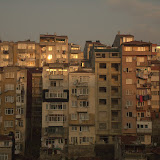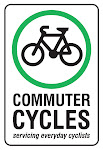 |
| From Istanbul |
Istanbul must surely be the most richly imagined city in existence. Layer upon layer of exoticised accounts by centuries of western traveler-writers lusting for something other than their staid and grey origins. It has been the aim and the end-point of many journeys, a natural full stop to traveling.
Probably the most overused descriptor for Istanbul – ‘East meets West’ – colours the background of our Istanbul, though has become somewhat abstract merely through repetition. For us, these antique notions of place and relation are a long way from our multiethnic home neighbourhoods, but have long drawn westerners to see the East and continue to inform the ‘western’ longings of this city.
Our own imaginings of Istanbul were heavily influenced by the writings of Orhan Pamuk, Nobel Prize winner and lifelong Istanbullu. From the medieval world of miniaturists (My name is Red) to the twentieth century melancholy of faded empires and crumbling buildings (Istanbul: memoirs of a City). If we have any insight into the Turkish Istanbul, it is him we must blame.
There is little we can add to the history of who come to see this chimera and return home to narrate the adventure. Indeed, the journey to Istanbul has been described as a literary genre in itself, with its own rules.
‘When the city becomes the capital of the Muslims opposing Christianity the first shock is gradually overcome (between the 16th and 17th centuries), thus Constantinople turns into an object of desire and triggers the exotic imagination of the West. The city turns into an object on which literary essays are written.’ (Umberto Eco, ://www.wan-press.org/article3190.html).
Approaching the grand and mysterious city was for centuries done by sea, and descriptions of the clustered houses, mansions and minarets are plentiful. Our approach, by bus was far less glamorous but eminently practical, eliminating the need to find a path through the sprawling defensive suburbs by which to besiege this city by bicycle.
Arriving a few days after a bombing in busy Taksim square, perhaps we expected more disorder and disturbance. But the city seemed already to have absorbed this incident amongst its existing chaos, notwithstanding the very noticeable security measures in place everywhere. Every public venue we entered – including the venue hosting the short film festival, a known hide-out of radicals - had at least a security guard and a scanner, a sad necessity.
From our cosy little nook in the suburb of Harbiye, we roamed and explored, living almost an expat life, though without having to work for it. We soaked up what modern Istanbul has to offer, though the past was always present within it. Shopping in Galata, the former home of Genoese sailors. Taking the bus to a basketball game (top ranked Fenerbahce playing Trabzon), via the 4th century city walls through which the Muslim armies captured Constantinople in 1453. Running along the waterfront at Kadikoy, where the early 13th century Crusaders landed. And returning home, we would exit the bustling thoroughfare of Cumhuriyet Caddesi and leave behind the modern city for the now-familiar neighbourhood where people still drop baskets from their apartment windows to the vendors below and gather outside the local lokantas and teahouses to discuss the news of the day.
We were fortunate enough to arrive in a year in which Istanbul has been promoting itself as a city of arts and culture, and a series of free events kept up the cultural melange. A choral festival (in which Turkish choirs sang American gospel and Swedish choirs sang Turkish pop), a documentary film festival, a short film festival and modern art exhibitions were woven in between visits to the Hagia Sofia and the Bookseller’s market (Sahaflar Carsisi) outside the Grand Bazaar.
And in between our bike cleaning and general winding up activities we found some time and energy to revisit running. Pacing through falling leaves in Belgrade Forest on the city’s outskirts and along the edge of the Bosphorous we found an excellent excuse to see more of the city than we could have imagined.
In Istanbul we walked Pamuk’s streets and sat in his squares. We unknowingly borrowed views from Hemingway, Twain, Melville and probably even Agatha Christie. Perhaps we got a sense of Baudrillard’s city of historical depth, where ‘myriad dreams stroll in the hills and the branches of the river’. In walking and sitting, reading and eating, watching and experiencing, we found our Istanbul.
And so we finish. No grand conclusions or final scenes. But a lot of good stories along the way.
Running summary 34km
Harbiye to Kabatas (return) 6km
Harbiye to Sisle (return) 5km
Belgrade Forest 9km
Haribye to Kabatas, ferry to Kadikoy, Kadikoy waterfront 8km
Haribye to Bebek 6km
 |
| Apartment view, Harbiye |
 |
| Istanbul |




2 comments:
Congratulations on getting to Istanbul. Awesome effort.
Thanks! Hope your travels are still going well.
Post a Comment